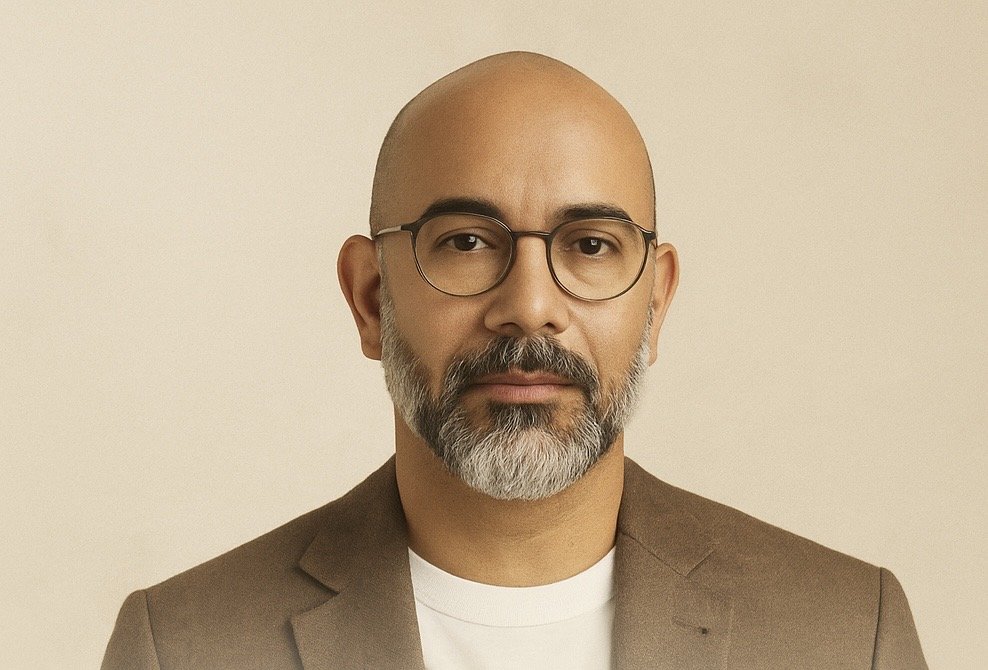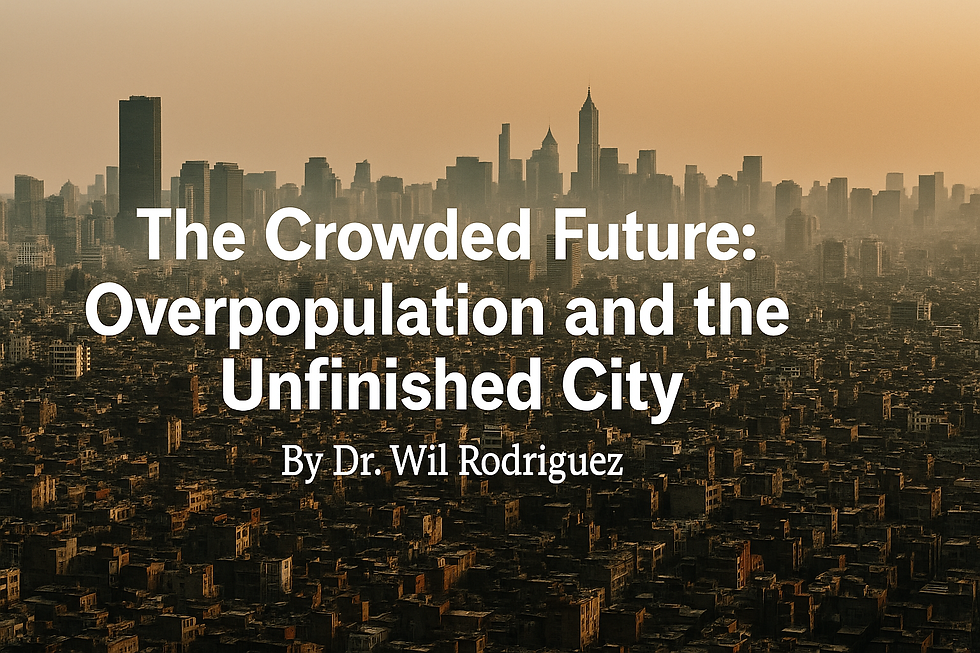The Crowded Future: Overpopulation and the Unfinished City
- Dr. Wil Rodriguez

- Aug 20
- 5 min read
By Dr. Will Rodríguez, TOCSIN Magazine

Introduction: The World Presses In
We live in an age where the sheer number of human beings on Earth presses against the boundaries of the possible. Cities swell into vast organisms, eating away at forests and fields. Highways stretch like veins across once quiet landscapes. Children are born into crowded neighborhoods where the skyline itself seems impatient, straining upward to find space. This is not a distant future imagined by science fiction—it is the lived reality of billions.
Overpopulation and accelerated urbanization have become the twin engines of a new planetary condition. The question is not whether humanity will continue to gather in denser clusters—it is whether we will find ways to live together without tearing apart the fragile fabric of the Earth and the fragile fabric of our societies.
A Planet Approaching Its Limits
The global population surpassed eight billion in 2022. By 2050, the United Nations projects that number could reach nearly 10 billion. Each additional billion is not just a statistic; it is millions of new homes, millions of new mouths to feed, millions of dreams colliding in the same finite space.
Urbanization has accelerated at a breathtaking pace. In 1950, less than one-third of humanity lived in cities. Today, more than half do, and by mid-century, two-thirds will call cities their home. This shift is more than demographic—it is civilizational. The planet is becoming an archipelago of mega-cities, hubs of opportunity, but also crucibles of inequality and stress.
The Promise of the City
Cities have always carried a magnetic pull. They promise work, education, healthcare, electricity, and cultural vibrancy. In a world where rural economies struggle against automation and climate change, urban centers appear as the only viable horizon.
Yet the very promise of the city creates its own dangers. Infrastructure buckles under the weight of sudden growth. Informal settlements rise in the shadows of skyscrapers. Millions are absorbed into slums where sewage, electricity, and safety are unreliable. The city becomes both savior and trap—a paradox of modernity.
When the Earth Pushes Back
Overpopulation and hyper-urbanization are not only social issues—they are environmental ones. Each new urban sprawl replaces farmland, wetlands, and forests with concrete and glass. The ecological consequences are immediate:
Biodiversity loss as habitats shrink.
Carbon emissions escalating with the expansion of industry, traffic, and construction.
Climate vulnerability as urban “heat islands” intensify global warming.
Water scarcity as cities outgrow their aquifers and rivers.
The Earth has begun to push back. Megacities like Cape Town, São Paulo, and Chennai have already faced “Day Zero” scenarios, where water nearly ran out. In Beijing, smog is not a weather condition but a season. In Lagos, millions live on precarious ground, as the city sprawls across fragile wetlands that no longer absorb the floods.
The Human Cost of Density
Behind the statistics are the stories of ordinary lives. Overpopulation does not appear in charts—it appears in the mother who cannot find space for her child in an overcrowded school. It appears in the young worker trapped in endless traffic jams that consume his hours, his wages, and his patience. It appears in communities suffocated by rising rents, where families are pushed further and further out, their roots severed by economic displacement.
Urbanization should have been humanity’s greatest invention: the city as a place of belonging, innovation, and human flourishing. Instead, in many cases, it has become a pressure cooker of stress, anxiety, and inequality.
Lessons From the Margins
Yet, there are counter-narratives. Some cities are experimenting with bold solutions:
Vertical cities in Singapore and Tokyo, where design maximizes space while minimizing environmental footprint.
Sustainable transit systems in Copenhagen and Bogotá, prioritizing bicycles and buses over cars.
Green architecture in Milan, where skyscrapers are covered with living trees.
Smart city technology in Seoul and Tallinn, integrating data to improve efficiency and equity.
These experiments suggest that urbanization does not have to be destructive. It can be harnessed, re-imagined, humanized. But only if governments and citizens have the courage to act.
Beyond Numbers: A Question of Ethics
The debate on overpopulation often collapses into cold calculations of numbers. But this is not merely a question of arithmetic—it is a question of ethics. Who gets to live in dignity when resources are finite? Who is pushed to the margins when the city runs out of space? Who decides what forms of life, human or non-human, are sacrificed to make room for others?
The moral challenge of our century is not simply how many people the Earth can sustain, but how humanity will choose to sustain itself. Overpopulation and urbanization force us to confront the stark inequities in global life. Wealthy nations consume vastly more per capita than poorer ones, yet it is the poor who are most vulnerable to the consequences of crowding, pollution, and scarcity.
A Call for Conscious Urbanism
We need a new urban ethic—a conscious urbanism that recognizes the city as a shared organism, not a battlefield of survival. Conscious urbanism would mean:
Building housing as a right, not a privilege.
Designing with nature, not against it.
Treating public space as sacred, not expendable.
Distributing resources fairly, across neighborhoods and across generations.
The city of the future must not be judged by its skyline, but by its humanity.
Conclusion: The Unfinished City
Every city is unfinished. It grows, it shifts, it breathes. But the question remains—will it grow into a place that honors its people, or will it collapse under the weight of its own contradictions?
Overpopulation and urbanization are not problems to be solved once and for all. They are conditions of our existence. The task is to guide them with vision, discipline, and imagination.
If we fail, our cities will become monuments to human short-sightedness. If we succeed, they may yet become sanctuaries of shared life, where billions of us find not just shelter, but belonging.
The crowded future is already here. What remains to be seen is whether we will allow it to crush us, or whether we will build from it the most humane civilization the Earth has ever known.
Reflection Box
The struggle with overpopulation and rapid urbanization is not abstract. It is the street outside your home, the skyline you watch from your window, the silence of a forest replaced by the roar of a freeway. As we stand at the edge of the most crowded century in human history, the true test will be whether we can remember that density does not mean disconnection—that humanity, when compressed, can either fracture or fuse into something profoundly new.
TOCSIN Magazine — where urgent voices meet urgent times.







Comments